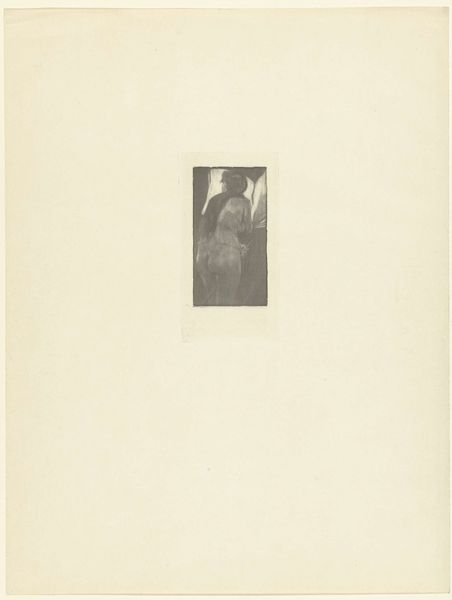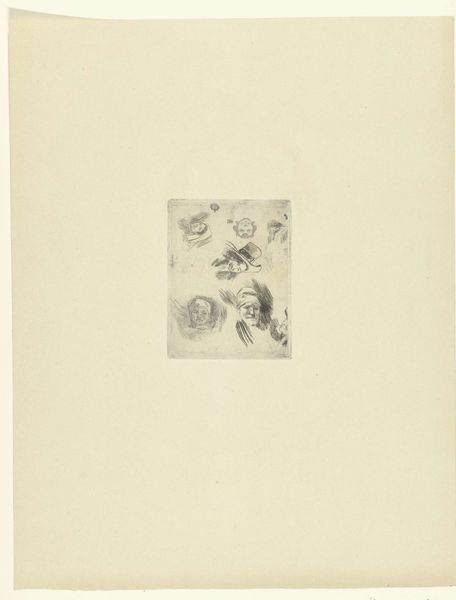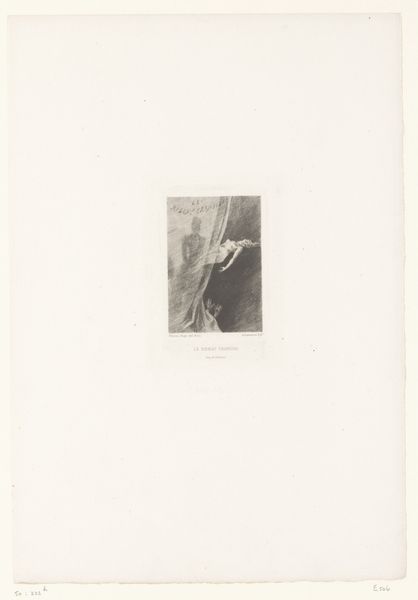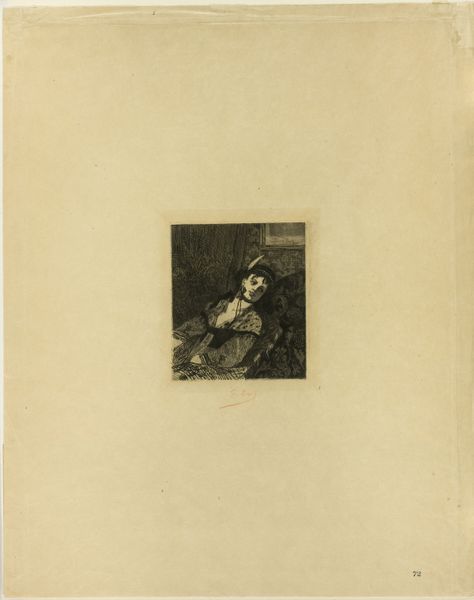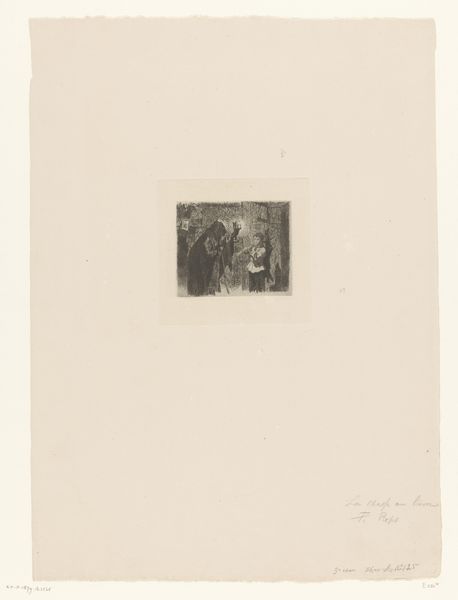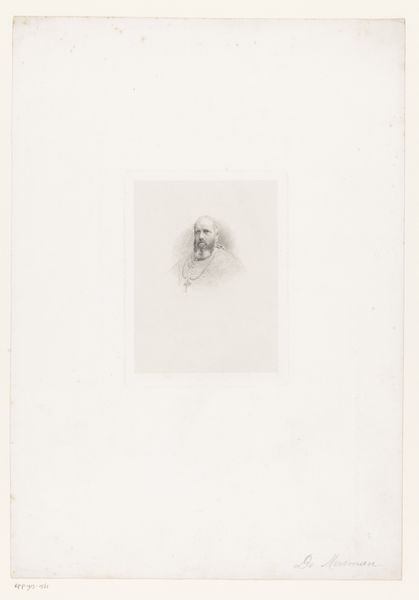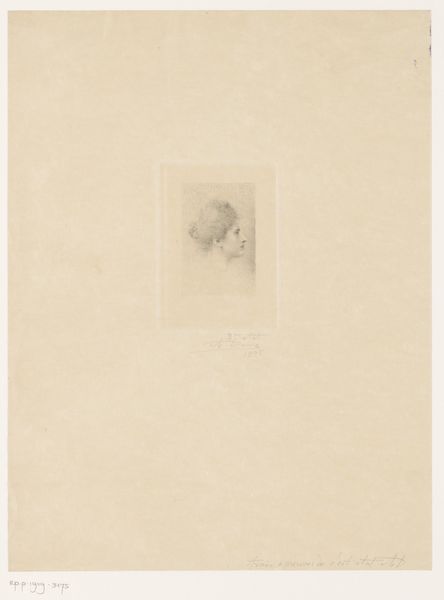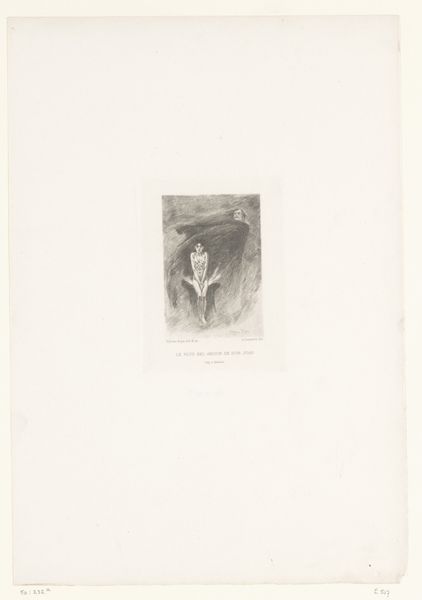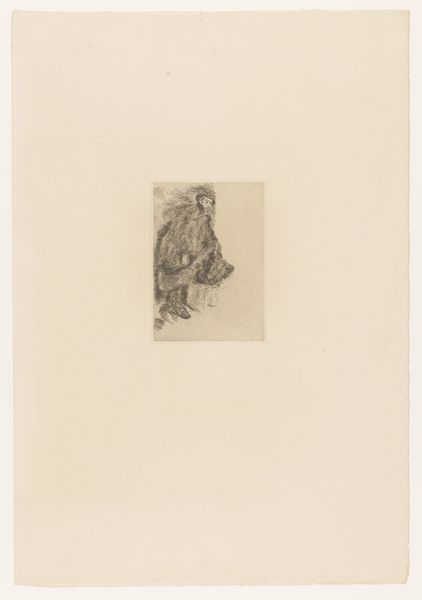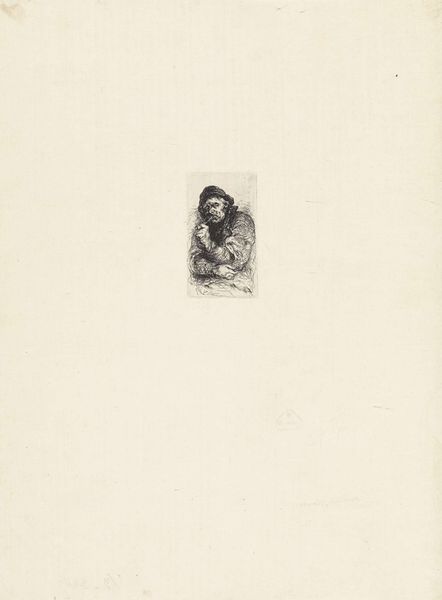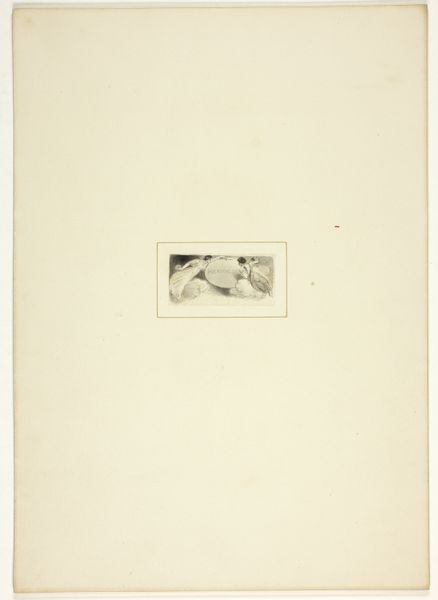
drawing, print, etching
#
portrait
#
pencil drawn
#
drawing
# print
#
etching
#
light coloured
#
old engraving style
#
symbolism
Dimensions: height 95 mm, width 65 mm, height 363 mm, width 280 mm
Copyright: Rijks Museum: Open Domain
Editor: This is Félicien Rops' "Head of a Male Actor with a Hat," an etching and print from 1895, currently held at the Rijksmuseum. It’s such a small, delicate image, and the actor's face seems partially obscured by the deep shadows under the hat. What do you see in this portrait? Curator: It's tempting to see this within the broader societal fascination with celebrity and performance in the late 19th century. Rops, deeply embedded in the Symbolist movement, likely isn't simply portraying an actor, but is perhaps exploring the constructed nature of identity itself. How does the very act of ‘playing’ a role shape both the performer and the audience’s perceptions? Editor: That’s interesting, the idea that performance is a kind of mask… Curator: Exactly. Think of the growth of mass media at the time. Lithography and printmaking allowed for widespread distribution of images, further fueling the cult of personality. Is Rops perhaps commenting on how easily personas could be manufactured and consumed? The stark contrast and limited detail seem intentional. What kind of figure is the actor meant to embody? Power? Sophistication? Something darker? Editor: Perhaps both, simultaneously? There’s definitely an ambiguity to the shadows. It also makes me think about how transient fame can be, like an ephemeral etching. Curator: Precisely. And considering Rops' other works, which often critique societal hypocrisy and decadence, this portrait may be less a celebration of fame and more an investigation into the performative nature of social roles in a rapidly changing world. What do you make of the size and placement of the print on the paper? Editor: That it highlights how small the figure of the actor is? Like, how the fame seems even more diluted by the expansiveness of the blank page surrounding it? Curator: A very insightful observation. We can use social and cultural history to further decode Rops’ art through its public reception at the time, too. Considering that Rops was criticized and praised by his contemporaries, would it influence how we see the man’s expression? Editor: Absolutely, viewing the social implications enriches the work by giving us a nuanced interpretation! Thanks for offering this perspective!
Comments
No comments
Be the first to comment and join the conversation on the ultimate creative platform.
